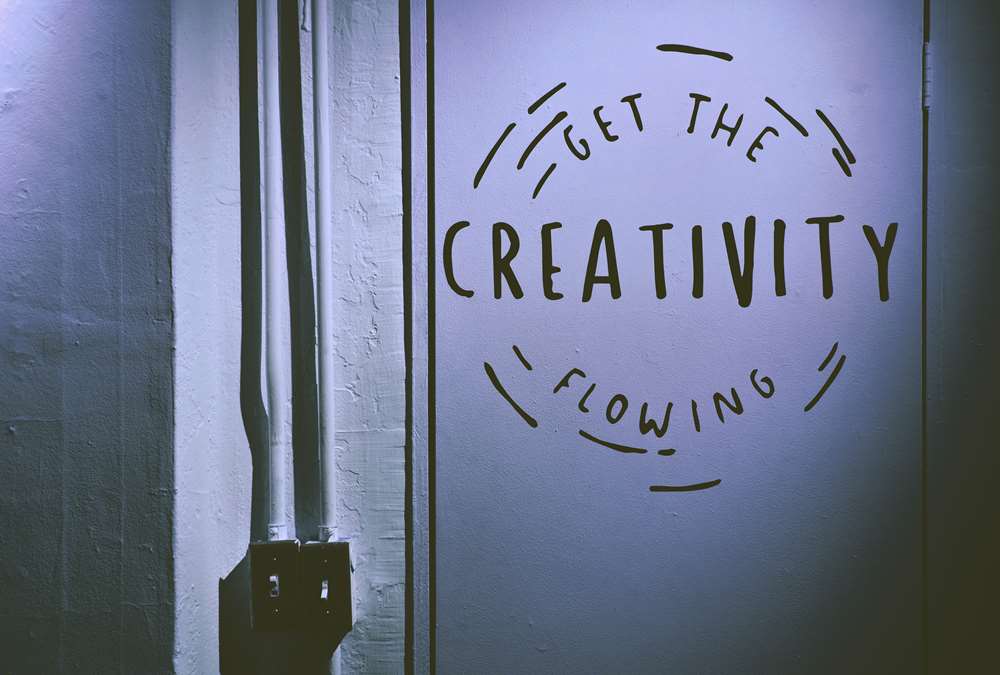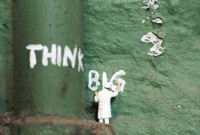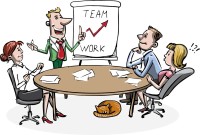- Home
- Business Processes
- Industry Knowledge
- Aerospace Industry
- Automotive Industry
- Banking Domain
- BFSI Industry
- Consumer/ FMCG Industry
- Chemicals Industry
- Engineering & Construction
- Energy Industry
- Education Domain
- Finance Domain
- Hospitality Domain
- Healthcare Industry
- Insurance Domain
- Retail Industry
- Travel and Tourism Domain
- Telecom Industry
- Leadership Skills
- eLearning
- Home
- Domain Knowledge
- Creativity Tools
- Process & Stages of Creativity
Process & Stages of Creativity
Creative ideas do not come just like that. There is a process to it. There are a number of techniques of creativity to support the generation of ideas but the widely practiced ones are brainstorming and lateral thinking. Most innovations are not so much the product of sudden insights as they are the result of a conscious process that often goes through multiple stages. The creative process can be divided into four stages of preparation, incubation, evaluation, and implementation.
Research on Creativity & Innovation Concepts
The history of research on stages of creativity began with Graham Wallas (1926) who suggested that creative thinking follows four successive steps of preparation, incubation, illumination, and verification.
Guilford (1986) considered creative thinking as involving divergent thinking, which emphasizes fluency, flexibility, originality, and elaboration. He also noted that creative thinking is not the same as divergent thinking, because creativity requires sensitivity to problems as well as redefinition abilities, which include transformations of thought, reinterpretations, and freedom from functional fixedness in driving unique solutions.
Torrance (1966, 1974) has explained six components of creativity. He has described these aspects of creativity in terms of their mode of measurement. These aspects of creativity are intellectual abilities, knowledge, thinking styles, personality, motivation, and environment. One has to stretch one's thoughts and let the mind wander.
Most innovations are not so much the product of sudden insights as they are the result of a conscious process that often goes through multiple stages. The creative process can be divided into four stages. All stages in the creative group process are critical to innovation. Let us discuss these phases.
1. Stage of Preparation / Discovery or Gathering Information:
The subject begins to gather information about the problem to be solved and attempts some solutions. This phase has two basic objectives i.e., developing core innovation competencies and generating new & creative ideas, which often includes gathering customer insights and translating them into workable ideas. Gathering enough knowledge about the problem and possible solutions and getting ideas generated.
This stage is characterized by a state of trial-and-error in learning. Therefore, the subject is advised to learn as much as possible about the problem area. Key activities during this phase include providing learning sessions, workshops, collaboration fairs, ideation boot camps, and other tools that teach people how to think differently. The group needs deep knowledge of the subjects relevant to the problem it's trying to solve, and a mastery of the processes involved. Group also needs fresh perspectives that are unencumbered by the prevailing wisdom or established ways of doing things.
Innovation enablers during this phase include:
- Carefully determining the composition of your group
- Enriching the workplace environment—the psychological and the physical environment.
- Providing tools and techniques that enhance idea generation. The goal of this procedure is to generate the largest possible list of information and ideas. Encouraging and rewarding idea generation
- Awareness of the brain's processing and potential hurdles
- Asking questions that haven't been asked before
- Asking questions from different perspectives
- Managing the process of innovation so that the best insights and ideas are translated into innovative products, services, and ideas.
- Investigating in all different directions to gather information about the problem to be solved.
- Challenging assumptions; "What if?" thinking
- List all concepts associated with the focus question.
- Defining winning/excellence Balancing big picture and details
- Seeing connections among facts or events that others have missed
- The thinker should not worry about redundancy, relative importance, or relationships at this point.
The goal of this stage is to generate and to generate quickly a wide variety of options. (From the list you generate, you select the best options to pursue further)
2. Stage of Incubation or Testing the Idea:
The next stage is to test and incubate when the group takes time to consider options. The second step is to test the idea for its possible outcome which is called incubation. In the second stage, the solution exists but is not clear. The subject must not intentionally work on the problem. They should establish a set of constraints for narrowing their possibilities and eventually making a choice. What are their constraints? Do they have a limited budget? Must they get their product to market before the end of the next fiscal year? How does the competition affect their choices? The group should be allowed to sink into the unconscious and advised to relax and reflect on the focus question which might lead them to modification of the focus question itself. Test and analyze each solution in terms of the marketability of the innovation, its potential cost to develop, and the time to get to market
3. Stage of Illumination or Evaluating the Idea:
The third step is when the idea is evaluated for commercial viability. In the third stage, the subject suddenly experiences insight into the problem when a new solution, idea, or relationship emerges. In this phase, the potential ideas and opportunities undergo a rigorous screening process. New ideas are discussed, tested, evaluated, and compared for their potential to add value for customers, generate new revenue streams, or accomplish a specific innovation goal. The primary objective is to identify the highest-value opportunities and determine the feasibility of turning them into reality. The key players during this phase are managers and leaders who have set clear strategic direction and guidance. To evaluate different ideas or options to determine which are worth pursuing, you would use convergent thinking.
Innovation enablers during this phase include:
- Creating and supporting an idea evaluation framework
- Accepting ideas (remain open)
- What functions are essential (from your customers' point of view) and what are "nice-to-have"?
- What criteria are determined by the company's values?
- Taking risks and balancing day-to-day versus longer term
- Encouraging some failure (within boundaries)
- What are your cost constraints?
- What are your size or shape constraints (for a product)?
- Within what time must you complete the project?
- Thinking cross-functionally/ organizationally
- In what ways must the product or service be compatible with existing products or services?
4. Stage of Implementation:
Creativity is a process you employ to improve your problem-solving. So you're not done until your creative efforts have produced a product, service, or process that answers the original need or solves the problem you identified at the outset. In the final stage, the idea has to be implemented for business success on a viable scale once the business viability is obtained. This phase involves making sure that the high-value opportunities identified during the evaluation phase align with organizational capabilities.
Then senior management has to commit the time, money, and resources to make the innovation happen. This is followed by close tracking of the business performance of the new product or service, as well as measuring the process used to develop the innovation and looking for ways to improve it.
Innovation enablers during this phase include:
- Developing risk management strategies and approaches
- Continually communicating the need for innovation as a business focus/ strategic mandate
- Linking and sponsoring innovation projects
- Incorporating innovation reports into the business review processes
- Funding innovation
- Capturing and sharing innovation learning's
The creative process is not as linear as these stages might suggest, but each phase is vital to group creativity. In some situations, the above stages may appear in a different order or combined into two or three stages. They also do not occur regularly. For example, sometimes the subject's knowledge of the problem area allows passing over the first stage (preparation) and move on to the next stage (incubation) or evening to the third stage. As a manager, it's important that you ensure your group's progression through each stage.
Related Links
You May Also Like
-
A manager or an employee in an organization who is experiencing a high level of stress may develop high blood pressure, ulcers, irritability, difficulty in making routine decisions, loss of appetite, accident proneness, and the like. These can be subsumed under three general categories, physiological, psychological, and behavioral symptoms. Stress can give rise to a number of changes.
-
Generating Ideas using SCAMPER
SCAMPER is an activity-based thinking process that can be performed by Cooperative learning. SCAMPER is an acronym that provides a structured way of assisting students to think out of the box and enhance their knowledge. This can be used in the organizational context as a technique for creative problem solving and as a toolkit to generate fresh ideas.
-
Understanding Corporate Strategy
Management outlook and procedures have been revolutionized by more and more innovations over the recent years. It is no longer possible to follow traditional approaches to develop your organization's direction, its management as well its effectiveness. Senior managers need to be good decision-makers. In this section, we introduce concepts for strategy, strategic planning, strategic leadership, their exact meaning and associated terms, and how to use them.
-
Change & Culture of Innovation
Predicting the future is a tricky business but managers need to have a future perspective in order to take business advantage and remain competitive. They need to drive and introduce constructive change to the business of the enterprise. The first step to creativity and innovation is to drive a culture of Innovation. Managers need to focus on developing future mindset all the time to keep pace with the unfolding future.
-
Building Perfect Creative Team
One misconception around creativity is that creative act is essentially solitary. Most of the world's important inventions resulted not from the work of one lone genius, but from collaboration of a team with complementary skills. Managers should build teams with the ideal mix of traits to form a creative group and then establish the conditions that make creativity much more likely to occur.
-
Understanding Concept of Creativity
Part of your job as a manager is to foster new ideas. But how do you assemble a team with the right mix of skills and perspectives to promote creativity? Creativity is the ability to come up with new and different ideas or breakthrough fixed ways of thinking. Learn how to manage an intellectually diverse work group and their environment to produce more and better ideas that encourage innovation when developing products and work processes.
-
Benefits of Teams in Workplace
The use of formal work teams is commonplace in modern organizations. But why we have teams? What are the benefits or advantages that teams provide for organizations and employees? Do we really need to adopt formal team structures and use team-building approaches in organizations? Read this article to explore and learn the benefits of having formal teams in organizations.
-
Collaborative leadership is all about collaborative problem-solving and decision-making or can also be defined as the leadership of a collaborative effort. . The term started to appear in the mid-1990s in response to the formation of long term public-private partnerships to rebuild public infrastructure. Learn how you can use principles of collaborative leadership to enhance your leadership skills for being an effective leader.
-
Generating Ideas using Brainstorming
The brainstorming technique was developed by Alex F. Osborn in 1957 and brainstorming means where a team of members generates a large amount of alternative fruitful ideas on a specific problem without any criticism and then evaluates each idea in terms of their pros and cons. Brainstorming techniques fall into four broad categories: visioning, exploring, modifying, and experimenting.
-
Process & Stages of Creativity
Creative ideas do not come just like that. There is a process to it. There are a number of techniques of creativity to support the generation of ideas but the widely practiced ones are brainstorming and lateral thinking. Most innovations are not so much the product of sudden insights as they are the result of a conscious process that often goes through multiple stages. The creative process can be divided into four stages of preparation, incubation, evaluation, and implementation.
Explore Our Free Training Articles or
Sign Up to Start With Our eLearning Courses

About Us
Learning
© 2023 TechnoFunc, All Rights Reserved










